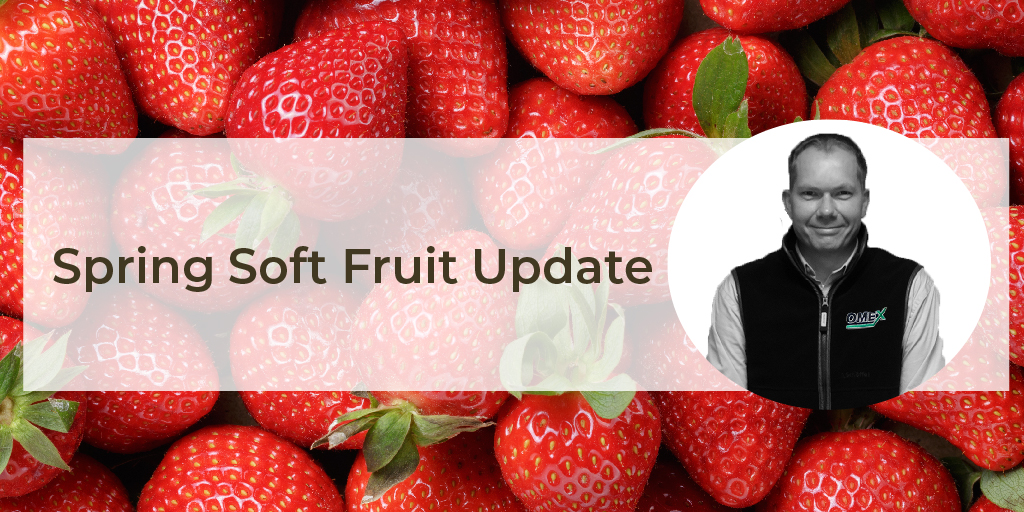
In the Spring edition of his Soft Fruit update, Agronimist Neil Holmes looks at the key issues facing growers:
Reaching the spring equinox generally suggests that there is a decreasing chance of a frost risk to soft fruit flowers.
Blueberries, cherries, forced June bearer and cold stored tray plant ever bearers are all in bloom or about to be at this time of year. It is essential that pollination, fertilisation and successful embryo development are supported in the forthcoming days and weeks through the application of optimal nutrition.
Fertigation cycles should be applied with increasing frequency as the temperature rises, providing macro and micro nutrition. Stock tank applications of O-Phyte (potassium phosphite) will help stimulate rooting in plants and assist in the movement of cations such as calcium (Ca2+).
Bloom periods indicate a time to transition between a vegetative to a generative feed recipe, the latter being higher in potassium, required for carbohydrate synthesis.
To plug the nutritional gaps between fertigation cycles, consider foliar feeding with an appropriate foliar feed. During bloom, pollination and early fruit development, all soft fruit crops require calcium to support cell division and also boron, a micro nutrient which is synergistically linked to calcium uptake. CalMax Ultra contains a wide range of nutrients including calcium and boron, as well as innovative AXM technology which is effectively a molecular crow bar to ensure calcium is moved into cells even during periods of low transpiration.
Calcium and boron applications throughout pollination and embryo development are essential in blueberry crops to prevent “run-off” or a widespread June drop effect caused by the plant aborting fruit development.
For 125cc/ heated misted tip ever bearers, main crop strawberries or sequentially planted long cane raspberries, applications of Kelpak support establishment of the plant by encouraging rooting. Once the leaf canopy develops, consider foliar feeding with Bio20, a 20%N-P-K+T.E. foliar feed with 28% Kelpak contained within it. Bio20 contains up to 14 times more nutrition compared to Maxicrop triple and when applied at 2L/ha, it represents excellent value compared to similar products in the market place.
Fluctuation between day and night temperatures often cause condensation inside tunnels which promotes fungal diseases. Support plant health with frequent applications of Zynergy at low rates (typically 0.5 L/ha), with a suitable adjuvant such as NA13 (at 0.1% or spray volume) when not applying a plant protection product. The unique formulation of Zynergy uses EBA technology to provide the plant with more copper and zinc, both essential for the functioning of the plant’s own immune response, compared to when an individual copper or zinc product is applied.
Supporting plant health with copper, zinc and sulphur as part of an integrated crop management programme means that the crop is in the best possible position to cope with an attack from a disease.
For more information on any of the products mentioned here or to optimise your current feed plans, speak to your local OMEX horticultural technical advisor.
